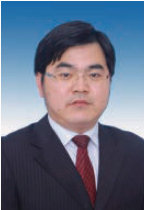Liu Xiangbing, Xu Chaoliang, Li Yuanfei, Jia Wenqing, Quan Qiwei,Yin Jian, Qian Wangjie, Jin Xiao
Suzhou Nuclear Power Research Institute, Suzhou, Jiangsu, 215000, China
EXTENDED ABSTRACT: Nuclear energy is an important choice to solve the energy problem. The reactor pressure vessel (RPV) is the only unreplaceable part of nuclear power station, which is exposed to high temperature, high pressure, corrosion, strong neutron radiation and other harsh environments in the PWR condition, especially under long-term irradiation conditions, leading to the reduction of RPV toughness and increase of the brittle fracture risk. In terms of service behavior research of RPV under irradiation, the high flux proton irradiation experiment at high temperature up to 1.6 dpa was carried out to domestic RPV steel, and the microstructure defects and mechanical properties were systematically studied by PAS, TEM, APT and nano-indentation. The research shows that the nano-hardness of RPV steel has significantly increased, after irradiation, with vacancy defects observed by PAS, dislocation loops which have 3.2 nm of average size observed under TEM, and found Mn-Ni-Si clustersin stead of Cu clusters by APT. Based on research and hardening model, it is believed that the main factor for hardening after high fluence irradiation is the Mn-Ni-Si clusters. In terms of prediction model on irradiation embitterment for RPV steels, a preliminary model is determined, then the critical threshold of Cu content of 0.072% is obtained and at last the prediction model of irradiation embitterment is developed. There is a weak correlation between residual fitting curve and fluence, flux, temperature, chemical composition. The standard deviation of residual is 10.76'C. The predicted data has a good consistency with the measured data. Most of the data falls in the vicinity of the 450 line. These results indicate a high reliability of PMIE-2020.
Keywords: Domestic RPV steel; Irradiation damage; Irradiation hardening; Prediction Technology


Liu Xiangbing, professor level senior engineer, graduated from Beijing University of Science and Technology, the deputy chief engineer of Suzhou Nuclear Power Research Institute. He has been engaged in the research of irradiation effects on nuclear structural materials, including embrittlement, IASCC, and other aspects of RPV, RVI, fuel cladding and other components. More than 60 papers have been published on academic journals, he has been selected into the "333 High level Talent Training Project" of Jiangsu Province, Jiangsu Province Industry Professor, got more than 10 awards such as the 2nd prize of energy innovation of China Energy Research Association and the 2nd prize of China Nuclear Society.